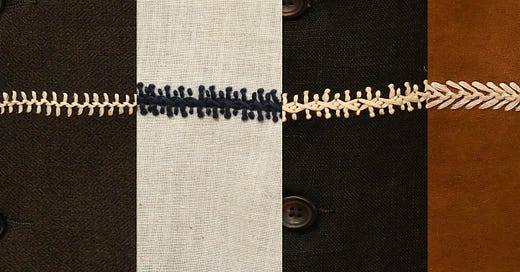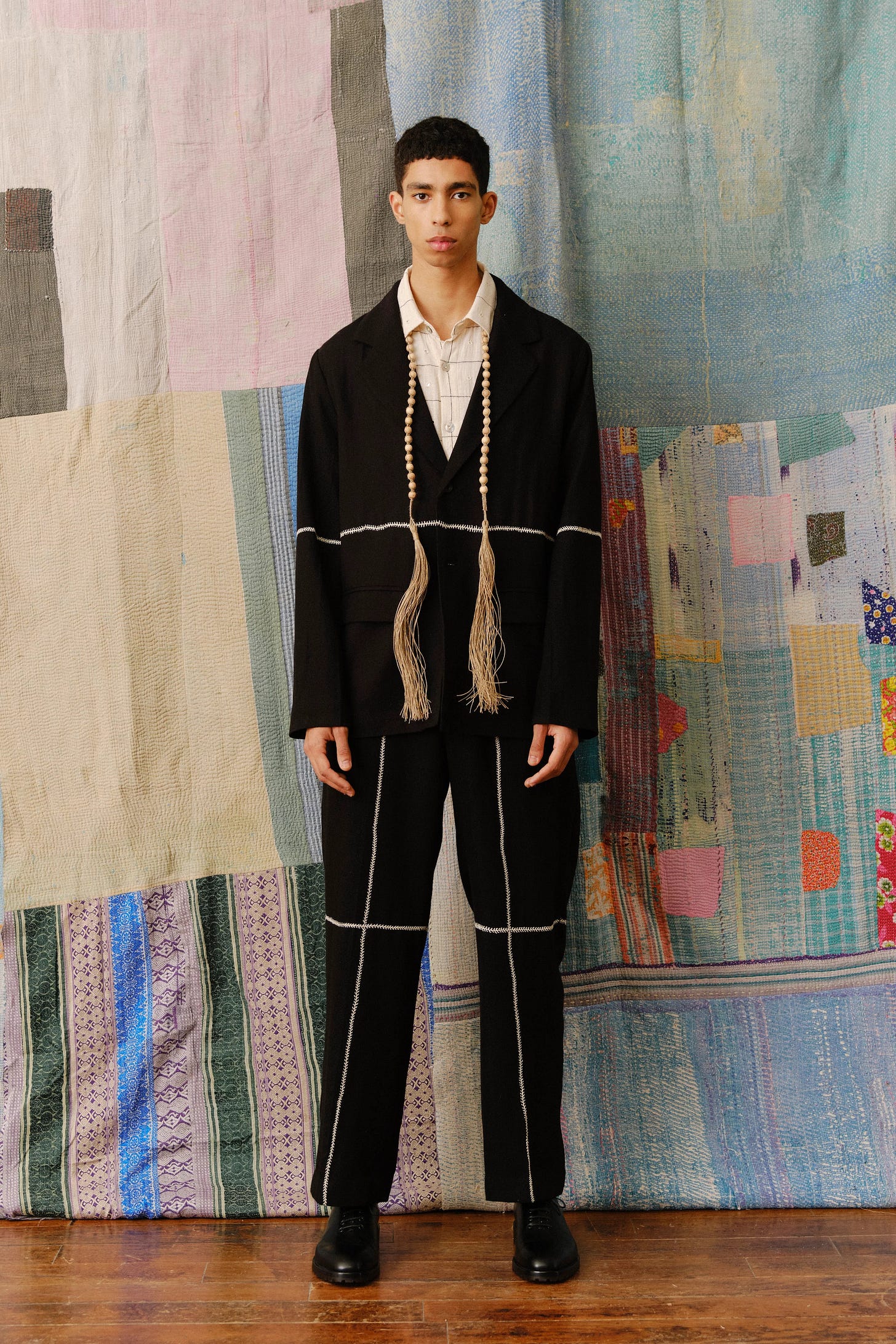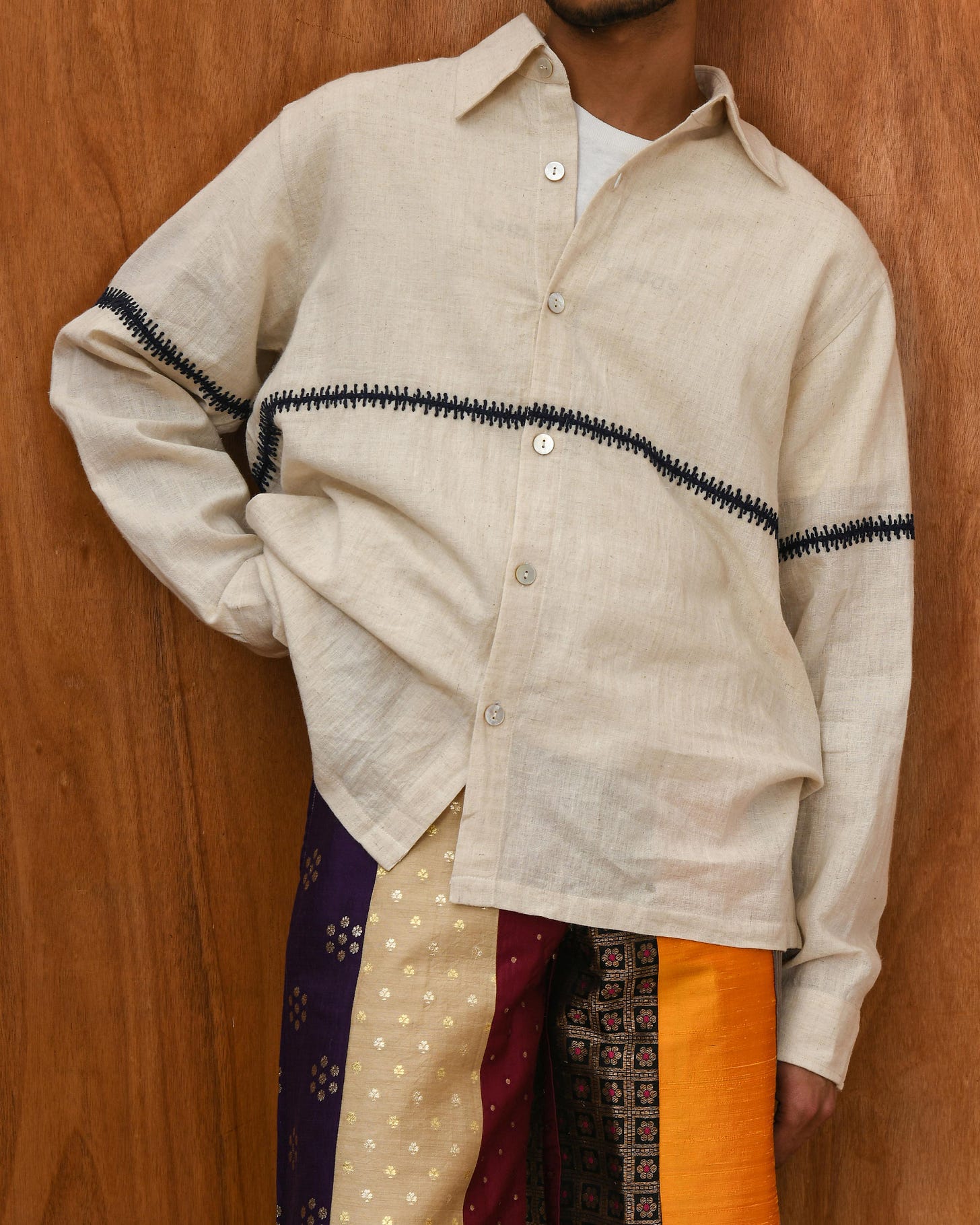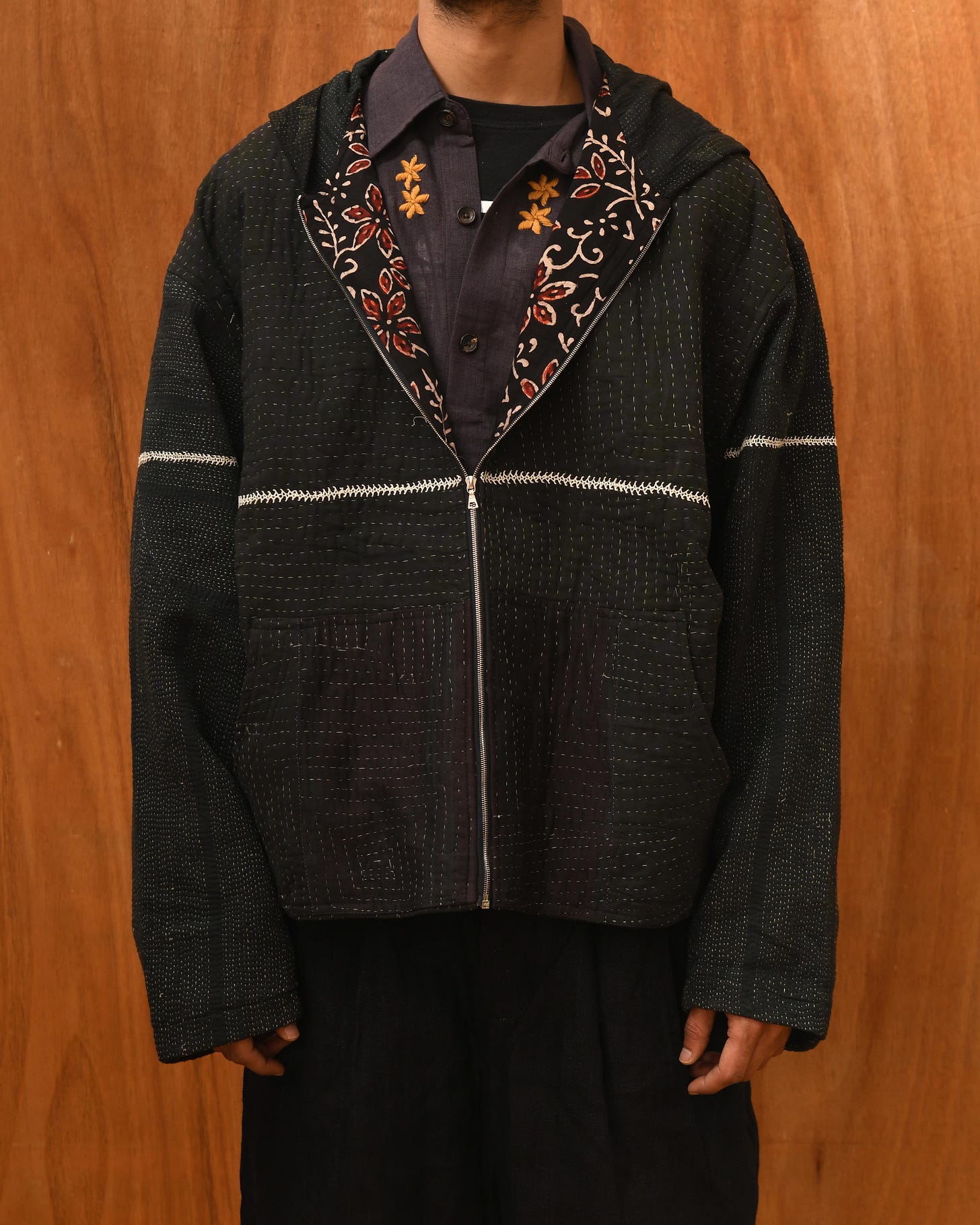There’s a growing pile of unreleased samples at our studio—shirts, coats, trousers, things that haven’t yet seen the light of day. As we prep them to be shot and catalogued, I’ve been thinking about how far the collections have come. After doing this for a few years now, putting together a collection feels more like muscle memory—instinctual but increasingly intentional. There’s a rhythm to it: develop, refine, observe. Then you start to see the patterns—not just in design, but in how people respond. You see what merchandisers latch onto, what stylists keep pulling, what your friends are actually wearing.
One piece we keep coming back to, and one that’s quietly become a signature, is a simple stitch borrowed from the Rabari community in Gujarat. We first introduced it in Fall/Winter 2024—a kind of running embroidery that’s since shown up on everything from breezy boxy shirts to heavy silk shorts. Lately, we’ve been testing it out on suede and leather, and somehow it always works. Minimal, directional, but rooted in something much older.
The Rabari are a nomadic pastoral community from Kutch, and since our earliest collections, that region has been a major part of the Kartik Research story. The women in these communities have embroidered for generations—first as a deeply personal practice, tied to marriage and tradition, later as a way to sustain themselves. The work was once loud and celebratory: mirrorwork, bright colors, intricate symbols passed from mother to daughter. These days, the aesthetic has shifted. With the help of organizations like Kala Raksha, we’ve been able to collaborate directly with Rabari women, giving them a say in design and pricing while we reinterpret their traditional techniques through our own lens.
Over the past two years and four collections, we’ve watched the stitch evolve. What was once folkloric has become abstract. The mirrorwork is gone. The palette’s toned down. The stitch now runs cleanly across the chest of a tailored blazer, or neatly traces the outseam of a trouser. It’s less decoration, more architecture.
That evolution—craft to profession, ritual to utility—is happening everywhere in India right now. And it brings up questions. What’s preserved? What gets lost? What do we gain when we adapt, and what are we giving up?
At the very least, it’s worth paying attention. The Rabari stitch isn’t just aesthetic—it’s a gesture toward something deeper. Every time we use it, we’re participating in a larger conversation about tradition, authorship, and identity. And that’s the kind of detail we think people should be wearing.
Below are a few pieces from past and upcoming collections where the Rabari stitch takes center stage.







